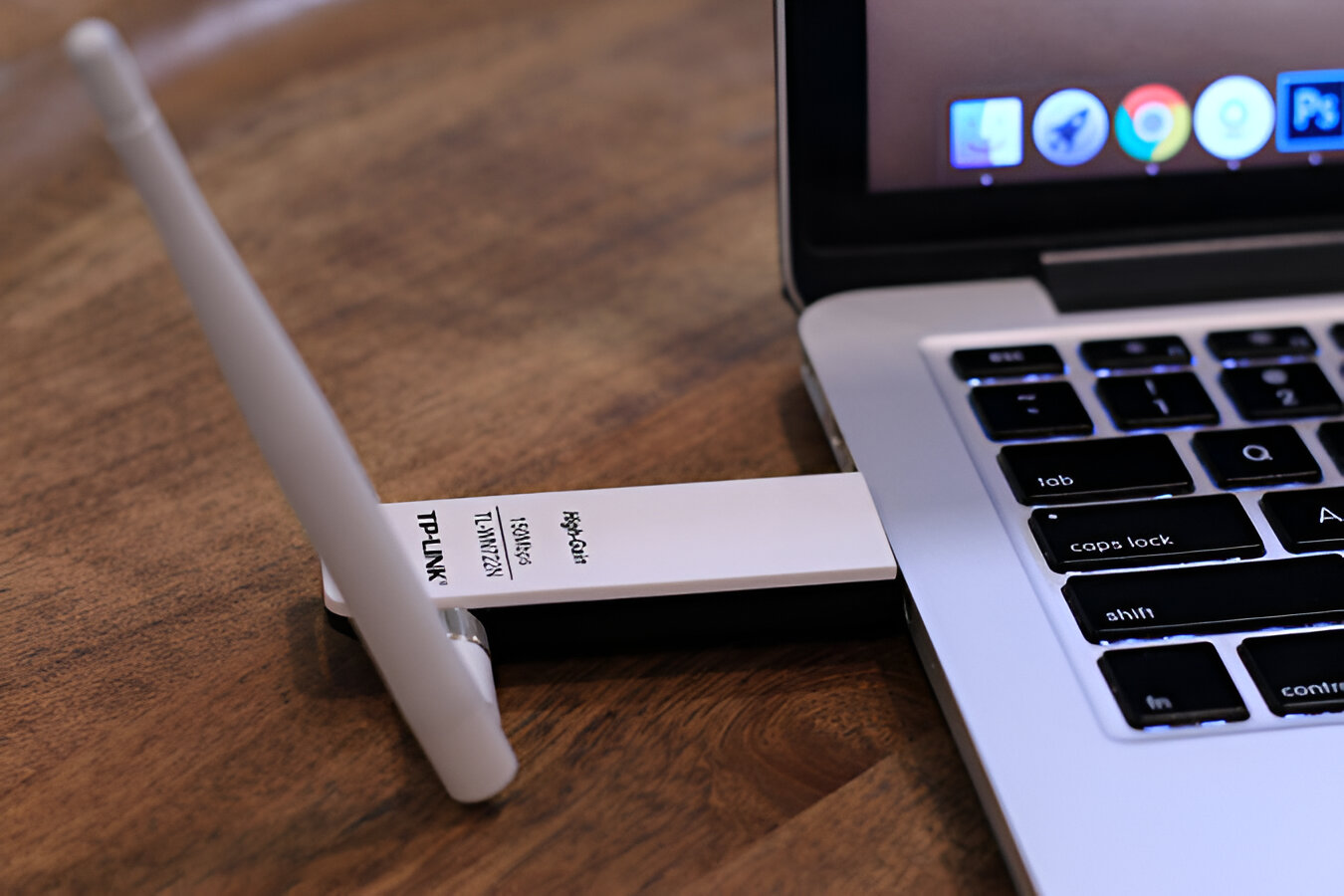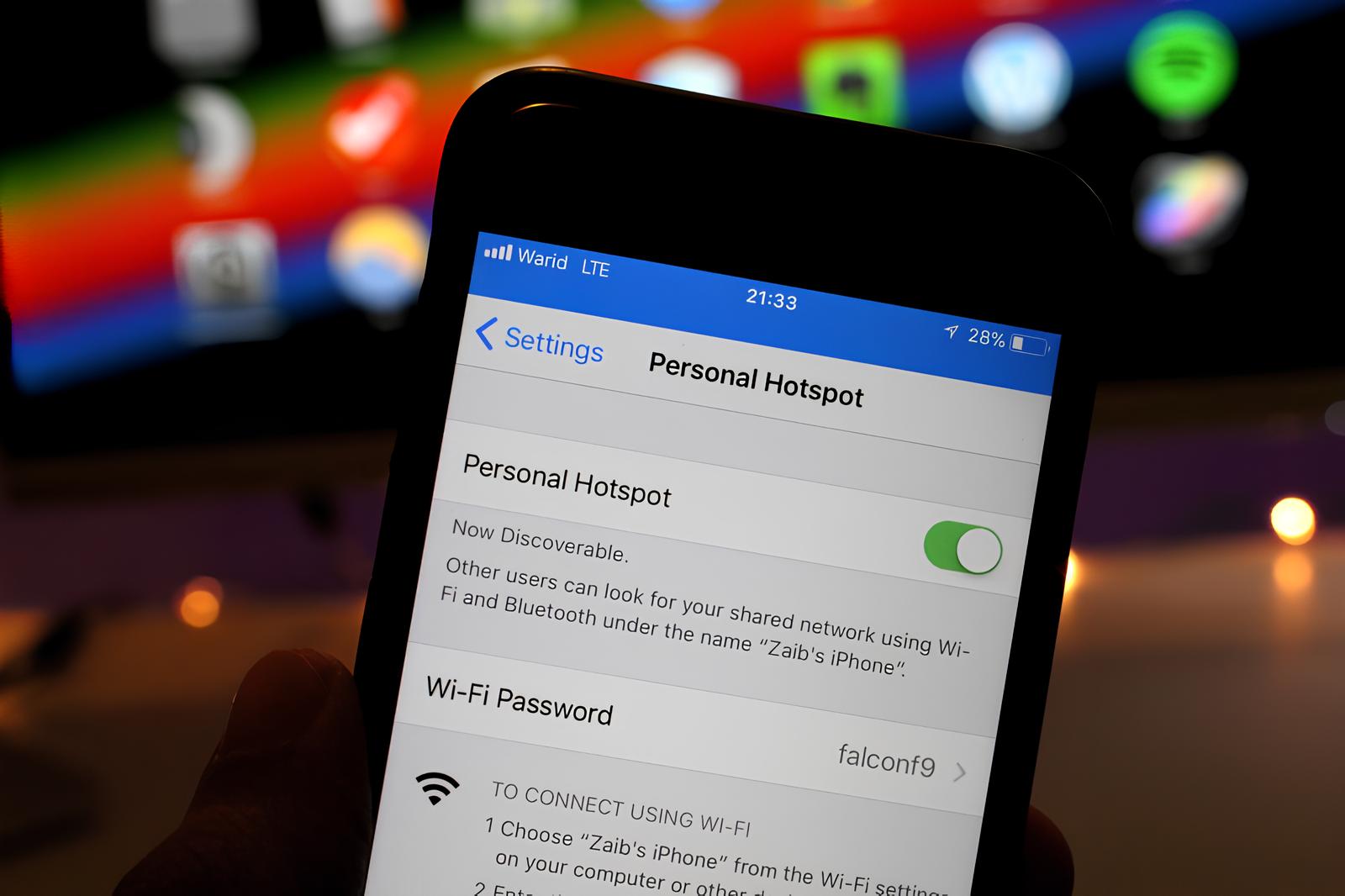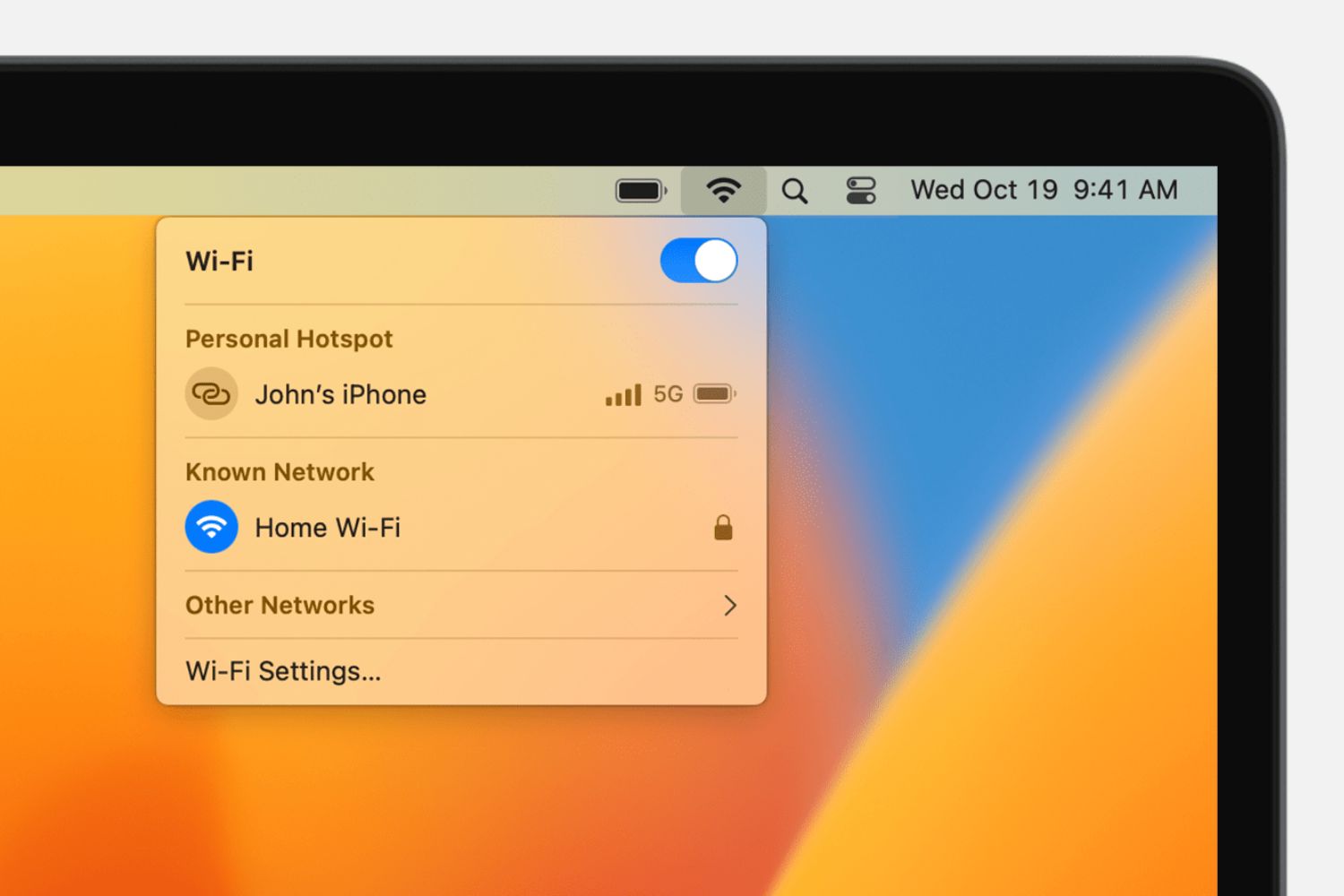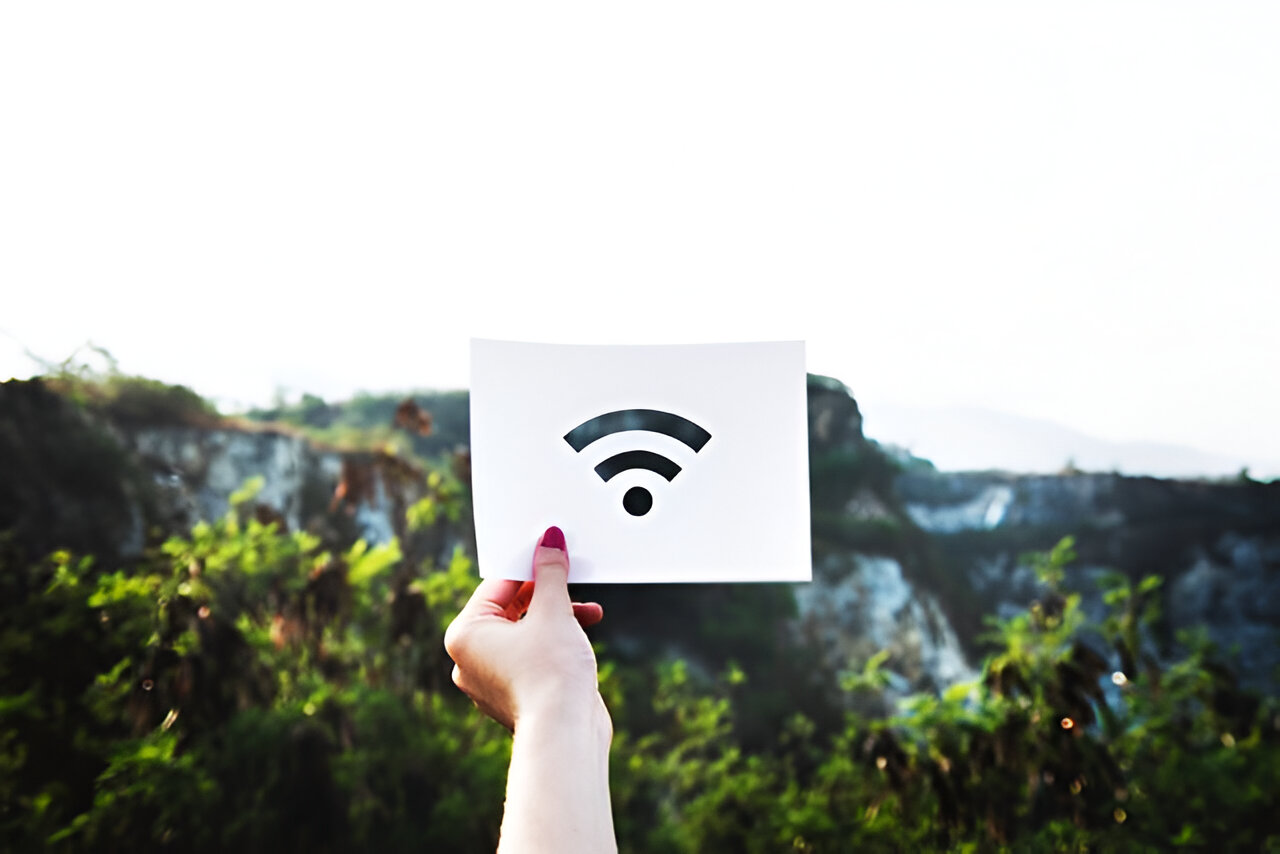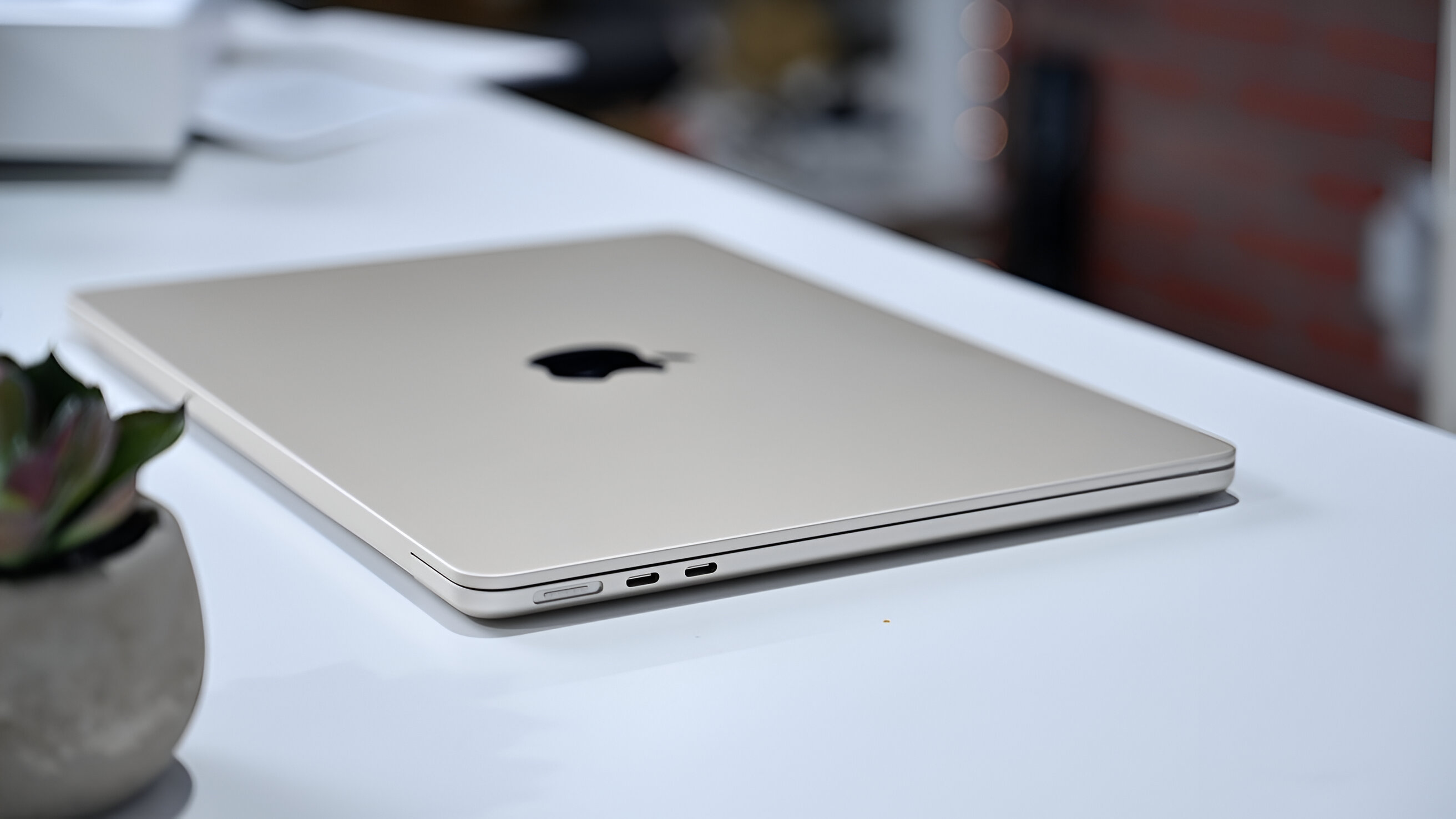Introduction
In today's fast-paced digital age, staying connected is more important than ever. Whether you're on the go, working remotely, or simply in need of a reliable internet connection, having access to a Wi-Fi hotspot can be a game-changer. However, relying on public Wi-Fi networks can often be risky due to security concerns and connectivity issues. Fortunately, if you own a MacBook, you have the power to transform it into a secure and efficient personal hotspot, allowing you to connect your other devices seamlessly.
By leveraging your MacBook's built-in capabilities, you can create a private Wi-Fi network that provides internet access to your devices, such as smartphones, tablets, and other laptops. This means you can enjoy the convenience of a secure internet connection wherever you are, without having to depend on potentially unsecured public networks.
In this comprehensive guide, we will delve into the world of MacBook hotspots, exploring the process of setting up and managing this valuable feature. We will also address common troubleshooting issues, ensuring that you have all the tools and knowledge necessary to make the most of your MacBook's hotspot functionality.
So, whether you're a digital nomad, a remote worker, or simply someone who values connectivity, join us as we unlock the full potential of your MacBook, transforming it into a reliable and secure Wi-Fi hotspot. Let's dive into the world of MacBook hotspots and harness the power of seamless connectivity.
Understanding Hotspot
A hotspot refers to a physical location where people can access the internet, typically using Wi-Fi technology. However, in the context of a MacBook, a hotspot takes on a different meaning. It allows the MacBook to act as a virtual router, sharing its internet connection with other devices. This means that if you have a wired or wireless internet connection on your MacBook, you can share it with other devices, effectively turning your MacBook into a portable Wi-Fi hotspot.
The concept of a hotspot is particularly valuable in situations where traditional internet access is unavailable or unreliable. For instance, if you're traveling and find yourself in an area with limited or no Wi-Fi access, having the ability to create a hotspot with your MacBook can be a game-changer. Additionally, in scenarios where you need to connect multiple devices to the internet but only have access to a single wired connection, such as in a hotel room, the hotspot feature becomes incredibly useful.
By understanding the capabilities of a hotspot, MacBook users can leverage this functionality to stay connected in various settings. Whether you need to connect your smartphone, tablet, or another laptop to the internet, the hotspot feature empowers you to do so seamlessly. This not only enhances productivity but also provides a sense of security and control over your internet connection, as you are no longer reliant on potentially unsecure public networks.
In essence, understanding the hotspot feature on a MacBook opens up a world of possibilities for staying connected in a secure and efficient manner. It transforms the MacBook into a versatile hub, capable of extending its internet connection to a wide range of devices, thereby enhancing the overall connectivity experience for users.
Setting Up Hotspot on MacBook
Setting up a hotspot on your MacBook is a straightforward process that allows you to share your internet connection with other devices. Whether you have a wired or wireless internet connection, your MacBook can serve as a reliable Wi-Fi hotspot, enabling seamless connectivity for your smartphones, tablets, and other devices.
To begin, navigate to the Apple menu in the top-left corner of your MacBook's screen and select "System Preferences." From there, click on "Sharing," which can be found in the Internet & Wireless section. This will open the Sharing preferences pane, where you can configure various sharing options for your MacBook.
Next, select the "Internet Sharing" option from the list of sharing services on the left-hand side of the Sharing preferences pane. After selecting "Internet Sharing," you will be prompted to choose the internet connection that you want to share. This can be your MacBook's built-in Wi-Fi connection, Ethernet connection, or even a USB modem connection.
Once you have selected the internet connection to be shared, you can then specify the method through which you want to share the connection. In this case, you will choose to share the connection via Wi-Fi. By clicking on the "Wi-Fi Options" button, you can set the network name (SSID), security type, and password for your hotspot. This allows you to create a personalized and secure Wi-Fi network for your devices to connect to.
After configuring the Wi-Fi options, enable the "Internet Sharing" checkbox to activate the hotspot. A confirmation dialog will appear, informing you that by turning on Internet Sharing, your MacBook will share its internet connection with devices connected to the Wi-Fi network. Click "Start" to confirm and initiate the hotspot.
Once the hotspot is activated, your MacBook will begin broadcasting the Wi-Fi network using the specified network name and security settings. Other devices within range can then discover and connect to the hotspot using the provided network credentials, thereby gaining access to the shared internet connection.
By following these simple steps, you can transform your MacBook into a powerful Wi-Fi hotspot, extending its internet connection to your other devices. This not only provides a convenient and secure means of connectivity but also showcases the versatility and capabilities of your MacBook as a hub for seamless internet sharing.
Connecting Devices to MacBook Hotspot
Once you have successfully set up your MacBook hotspot, connecting other devices to it is a seamless process. Whether you want to use your smartphone, tablet, or another laptop, these steps will guide you through the process of establishing a connection to your MacBook's hotspot.
-
Discover the Hotspot: On the device you wish to connect, navigate to the Wi-Fi settings and scan for available networks. Your MacBook's hotspot, identified by the network name (SSID) you specified during setup, should appear in the list of available networks.
-
Select the Hotspot: Once the MacBook's hotspot is visible in the list of available networks, tap or click on it to initiate the connection process. If you configured a password for the hotspot during setup, you will be prompted to enter it at this stage.
-
Establish the Connection: After entering the correct password, the device will proceed to establish a connection to the MacBook's hotspot. Once the connection is established, a confirmation message or indicator will typically appear, indicating that the device is now connected to the hotspot and has access to the shared internet connection.
-
Verify Connectivity: To ensure that the connection is successful, you can open a web browser or launch an app that requires internet access on the connected device. If the connection is functioning as expected, you should be able to browse the internet and use online services seamlessly.
By following these steps, you can connect your devices to your MacBook's hotspot, enabling them to leverage the shared internet connection. This process empowers you to extend the reach of your MacBook's internet connection to a wide range of devices, providing flexibility and convenience in various scenarios.
Furthermore, the ability to connect multiple devices to your MacBook's hotspot underscores the versatility and practicality of this feature. Whether you're collaborating with colleagues, sharing resources with friends, or simply ensuring that all your devices are connected, the MacBook hotspot serves as a reliable and secure bridge to seamless connectivity.
In essence, by connecting devices to your MacBook's hotspot, you are leveraging the power of your MacBook to create a personal Wi-Fi network that enhances your digital connectivity experience. This capability not only showcases the adaptability of your MacBook but also reinforces its role as a central hub for extending internet access to a diverse array of devices.
Managing MacBook Hotspot Settings
After successfully setting up your MacBook hotspot, it's essential to understand how to manage its settings effectively. Managing the hotspot settings allows you to customize and optimize the Wi-Fi network, ensuring seamless connectivity and security for all connected devices.
Customizing Network Name and Password
One of the primary aspects of managing your MacBook hotspot is the ability to customize the network name (SSID) and password. By revisiting the Sharing preferences pane in the System Preferences menu, you can modify the network name and password to better suit your preferences or enhance security. This flexibility enables you to create a personalized and easily identifiable Wi-Fi network for your devices to connect to.
Monitoring Connected Devices
As the administrator of the MacBook hotspot, you have the capability to monitor the devices that are currently connected to the network. By accessing the Sharing preferences pane, you can view a list of connected devices, allowing you to keep track of the devices utilizing the shared internet connection. This visibility provides valuable insights into network activity and allows you to manage the connected devices effectively.
Security and Encryption Settings
Managing the security and encryption settings of your MacBook hotspot is crucial for safeguarding the integrity of the shared internet connection. Within the Wi-Fi Options menu in the Sharing preferences pane, you can review and modify the security type and encryption settings. By choosing robust security protocols and encryption methods, such as WPA2 and AES, you can enhance the security of your hotspot, protecting it from unauthorized access and potential security threats.
Adjusting Sharing Options
In addition to managing the Wi-Fi hotspot settings, you have the ability to adjust sharing options to tailor the connectivity experience. Within the Sharing preferences pane, you can explore advanced sharing settings, such as configuring specific sharing protocols and customizing network access permissions. This level of control empowers you to fine-tune the sharing options to align with your connectivity requirements and preferences.
Optimizing Performance and Range
Managing the hotspot settings also extends to optimizing its performance and range. By adjusting the transmission power and channel selection within the Wi-Fi Options menu, you can optimize the signal strength and coverage of the hotspot. This ensures that connected devices experience reliable connectivity and efficient data transfer, regardless of their proximity to the MacBook.
In essence, managing the settings of your MacBook hotspot empowers you to customize, secure, and optimize the Wi-Fi network to suit your specific needs. By leveraging the flexibility and control offered by the hotspot settings, you can create a secure and efficient connectivity environment for all your devices, enhancing the overall digital experience.
Troubleshooting Common Hotspot Issues
Despite the convenience and versatility of using your MacBook as a hotspot, you may encounter occasional issues that can disrupt the seamless connectivity experience. Understanding and effectively troubleshooting these common hotspot issues is essential for maintaining a reliable and secure Wi-Fi network. Here are some common hotspot issues and the corresponding troubleshooting steps to address them:
1. Connectivity Problems
If devices are unable to connect to your MacBook's hotspot, start by ensuring that the hotspot is enabled in the Sharing preferences pane. If the hotspot is active but devices still cannot connect, try restarting the hotspot by disabling and re-enabling the Internet Sharing option. Additionally, verify that the Wi-Fi network name (SSID) and password are correctly entered on the devices attempting to connect.
2. Limited Range or Signal Strength
If you notice that the range or signal strength of your MacBook's hotspot is limited, consider adjusting the transmission power and channel selection within the Wi-Fi Options menu. Experiment with different channel settings to minimize interference and maximize signal coverage. Additionally, relocating your MacBook to a central location within your space can help improve the overall range and signal strength of the hotspot.
3. Intermittent Connection Drops
Intermittent connection drops can be frustrating, but they can often be resolved by updating your MacBook's system software and network drivers. Ensure that your MacBook is running the latest version of macOS and that all relevant software updates are installed. Additionally, restarting your MacBook and the connected devices can help refresh the network connections, potentially resolving intermittent drop issues.
4. Slow Internet Speeds
If you experience slow internet speeds when connected to your MacBook's hotspot, it may be due to network congestion or interference. To address this, consider adjusting the channel selection and transmission power to optimize signal quality. Furthermore, limiting the number of connected devices or prioritizing bandwidth allocation for specific tasks can help improve internet speeds for all connected devices.
5. Security Concerns
If you have concerns about the security of your hotspot, ensure that you have enabled robust security and encryption settings, such as WPA2 and AES, within the Wi-Fi Options menu. Additionally, regularly review the list of connected devices in the Sharing preferences pane to detect any unauthorized access attempts. Changing the hotspot password periodically can also enhance security.
By effectively troubleshooting these common hotspot issues, you can ensure that your MacBook's hotspot continues to provide a reliable, secure, and efficient Wi-Fi network for all your connected devices. By addressing connectivity, range, intermittent drop, speed, and security concerns, you can maintain a seamless digital connectivity experience, maximizing the full potential of your MacBook as a versatile hotspot hub.







